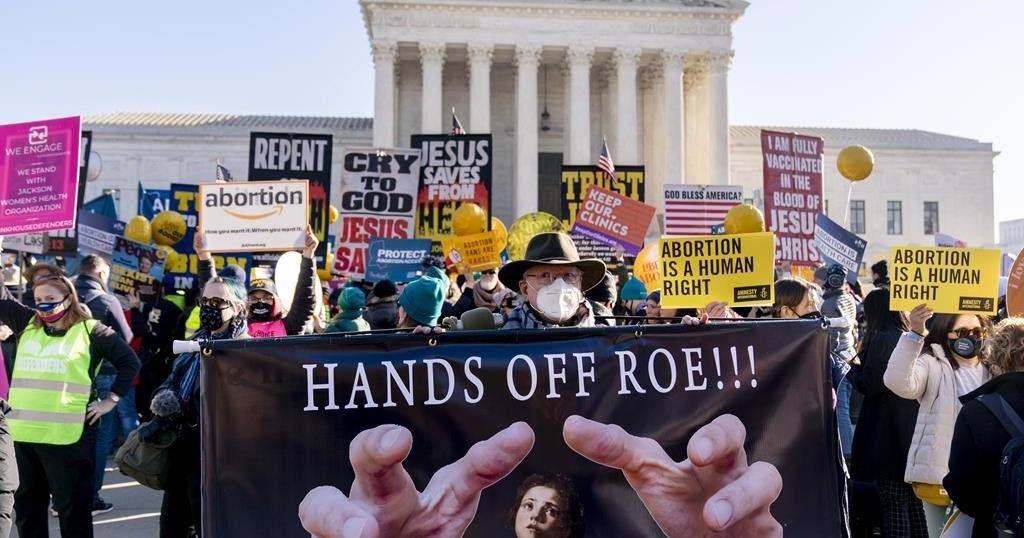There’s no doubt that Canada boasts a rich tapestry of cinematic brilliance. Several film directors have left an indelible mark on the global stage. These icons have not only shaped the landscape of cinema but have also left an enduring legacy. Through their unique storytelling and visual prowess, they have become true legends in the world of film. And if you’re Live betting odds are as adrenaline-rushing as these directors’ works, you’ll be more than happy to update your watch list.
1. David Cronenberg: Master of the Macabre
Known for pushing the boundaries of the horror genre, David Cronenberg has earned his place among the cinematic elite. From classics like “The Fly” and “Videodrome,” Cronenberg’s films often explore unique themes. These include the intersection of technology, the human body, and societal anxieties. Despite some controversies, his knack for unsettling audiences has made him a respected figure. You’ll definitely love to watch his blockbuster hits when you’re done reading the blog.tonybet.com.
In Cronenberg’s early films like “Shivers” (1975) and “Rabid” (1977), he kicked off the body horror trend. This kind of horror digs into how our bodies go through wild changes, both physically and mentally. Cronenberg was all about the weird mix of human flesh and machines, showing it in strange and surreal scenes, making it a big part of his unique style.
The psychological and existential aspects are evident in “Videodrome” (1983) and “Dead Ringers” (1988). “Videodrome” seeks the disturbing intersection of technology and the human mind. “Dead Ringers” explores the psychological unraveling of identical twins. Both films exemplify Cronenberg’s ability to create challenging narratives within the horror framework.
“The Brood” (1979) and “Scanners” (1981) further solidified Cronenberg’s reputation as a master of body horror. “The Brood” explores the psychological implications of repressed emotions. “Scanners,” on the other hand, introduces individuals with telepathic and telekinetic abilities.
His impact on the horror and science fiction genres is immeasurable. Whatever films you’ve seen by him, they’ve inspired a new generation of filmmakers and critics. In fact, the term “Cronenbergian” is often used to describe works that share his thematic and stylistic preoccupations. His willingness to challenge societal norms has contributed to his enduring legacy in the world of cinema.
2. Atom Egoyan: Crafting Intricate Narratives
Atom Egoyan is a Canadian filmmaker of Armenian descent. He is renowned for his ability to craft intricate narratives that examine the complexities of the human psyche. The director combines a fascination with technology and a penchant for nonlinear storytelling. This, paired with a deep exploration of cultural histories, makes his filmmaking style quite unique.
His career took off in the 1980s with films like “Next of Kin” and “Family Viewing,” which hinted at his unique storytelling approach. Even in these early works, Egoyan demonstrated a fascination with the impact of technology on human connections. This became a theme that would become a hallmark of his filmography.
Egoyan gained international recognition with “Exotica” (1994), a film that weaves a complex web of relationships in a strip club. It explores themes of desire, loss, and emotional connection. The Sweet Hereafter” (1997), based on Russell Banks’ novel, further solidified his reputation. With its nonlinear narrative structure, the film examines the aftermath of a tragic school bus accident in a small town. It earned critical acclaim and Academy Award nominations.
Egoyan’s films often delve into the intricacies of identity and the impact of technology on human relationships. He also uses the concept of the unreliability of memory in his films. In “Felicia’s Journey” and “Ararat,” he explores the interplay between personal and cultural histories. This adds layers of complexity to his narratives. His storytelling is marked by a willingness to challenge audiences with thought-provoking themes.
Egoyan is known for taking artistic risks, including adapting challenging material for the screen. With the willingness to tackle complex narratives, he stands out as a filmmaker unafraid to push the boundaries.
3. Denis Villeneuve: From Quebec to Hollywood Heights
Denis Villeneuve’s ascent to Hollywood stardom has been nothing short of spectacular. With films such as “Arrival” and “Blade Runner 2049,” Villeneuve has demonstrated a mastery of visual storytelling. While controversies are scarce in his career, his ability to tackle genres with finesse has elevated him to legendary status.
Villeneuve’s breakthrough came with “Incendies” in 2010, a film that received international acclaim. He was nominated for the Academy Award for Best Foreign Language Film. The emotionally charged narrative showcased Villeneuve’s ability to handle complex and powerful stories.
His foray into science fiction elevated him to new heights. “Arrival” (2016), for example, was a cerebral and visually stunning exploration of communication and time. The movie got a lot of love and even scored him a nod for Best Director at the Academy Awards. After that big win, he tackled the challenge of directing “Blade Runner 2049” (2017), a follow-up to the classic original. People praised the film for looking visually stunning and having a deep story.
Villeneuve’s signature style is marked by meticulous attention to detail and atmospheric tension. He also uses a visual language that immerses audiences in the worlds he creates. His collaborations with cinematographer Roger Deakins have been particularly noteworthy.
Villeneuve’s films often tackle complex themes with a nuanced touch. This has earned him a reputation for delivering intellectual depth and emotional resonance.
4. Sarah Polley: A Directorial Force and Storytelling Sensation
Sarah Polley’s transition from acclaimed actress to director has been remarkable. Her impact on Canadian cinema is characterized by a commitment to authentic narratives.
Sarah Polley began her career as an actress, gaining prominence in films like “The Sweet Hereafter” and “Exotica.” Her early success as an actress laid the foundation for a transition into filmmaking. She soon established herself as a directorial force.
She made a striking directorial debut with “Away from Her” in 2006, an adaptation of Alice Munro’s short story “The Bear Came Over the Mountain.” The film explores the impact of Alzheimer’s disease on a long-term marriage. And, of course, it garnered widespread critical acclaim. Julie Christie’s performance earned an Academy Award nomination, and Polley’s direction marked her as a talent to watch.
Films like “Take This Waltz” and “Stories We Tell,” explore the intricate dynamics of human relationships. Polley’s storytelling is marked by its emotional depth and a keen understanding of the human condition. Her ability to navigate the nuances of interpersonal connections sets her apart as a director.
5. James Cameron: The Visionary Blockbuster Maestro
No exploration of Canadian directors would be complete without James Cameron. Renowned for his blockbuster epics, Cameron’s ability to create stunning spectacles is unparalleled. Often hailed as “The Visionary Blockbuster Maestro,” he has left an indelible mark on the film industry. His visionary storytelling and technological innovation have captivated global audiences. And Cameron’s career has been nothing short of extraordinary.
He directed two blockbuster films that became iconic in cinema history. “Titanic” (1997) not only took the world by storm but also snagged 11 Academy Awards, including Best Picture and Best Director. “Avatar” (2009) revolutionized filmmaking by introducing groundbreaking 3D technology. It actually set new standards for immersive cinematic experiences.
Cameron also places a strong emphasis on authentic storytelling and character development. Despite the grandiosity of his films, the emotional resonance of the characters remains a central focus. This balance between jaw-dropping visuals and relatable stories contributes to his enduring appeal.
Despite his successes, Cameron’s ambitious projects often come with challenges and controversies. The production of “Titanic” faced numerous obstacles. These included budget overruns and skepticism from the industry. “Avatar” was also a massive undertaking that tested the limits of technology and resources. However, his ability to overcome these challenges speaks to his commitment to his creative vision.
6. Xavier Dolan: The Wunderkind of Quebec Cinema
Xavier Dolan stands out as a prodigious talent in the realm of Quebec cinema. He has earned the title “The Wunderkind” for his remarkable achievements at a young age. Dolan’s directorial debut, “I Killed My Mother,” catapulted him into the international spotlight. It also showcased his extraordinary capabilities as a filmmaker.
The film received standing ovations and three awards. The latter included the prestigious Directors’ Fortnight Art Cinema Award. The movie is about the rocky relationship between a young gay man and his mother. It explores themes of love, identity, and familial conflicts with a depth and maturity that belied Dolan’s age.
Dolan is known for his distinctive visual style, characterized by bold colors and dynamic camerawork. His films often feature intense emotional narratives. This unique blend of visual flair and emotional depth has become a hallmark of Dolan’s work.
7. Jean-Marc Vallée: Crafting Emotional Landscapes
Jean-Marc Vallée is recognized for films that show the complexities of human relationships. “Dallas Buyers Club” and “Wild” garnered critical acclaim for their powerful storytelling. He connects with audiences by capturing raw emotions.
Vallée’s career began in the world of French-language cinema. He gained recognition for films like “C.R.A.Z.Y.” (2005), a coming-of-age drama that explores themes of identity and acceptance. Even in these early works, Vallée displayed a talent for portraying nuanced emotions.
Vallée gained international recognition with “The Young Victoria” (2009). The film is a period drama that explores the early years of Queen Victoria’s reign. Its success demonstrated Vallée’s versatility as a director. It showcased his ability to navigate historical narratives.
“Dallas Buyers Club” (2013) marked a pivotal moment in Vallée’s career. The film, based on the true story of Ron Woodroof’s battle with AIDS, received widespread acclaim. It earned several Academy Awards, including Best Actor and Best Supporting Actor. Vallée’s direction was praised for its raw emotional impact and authenticity.
Related


































